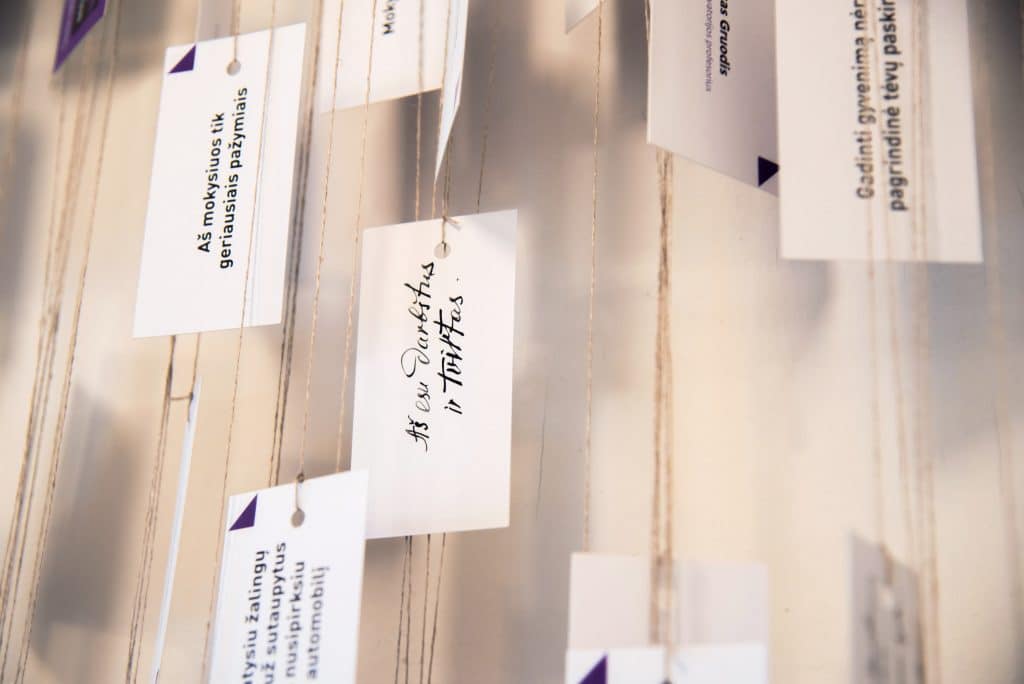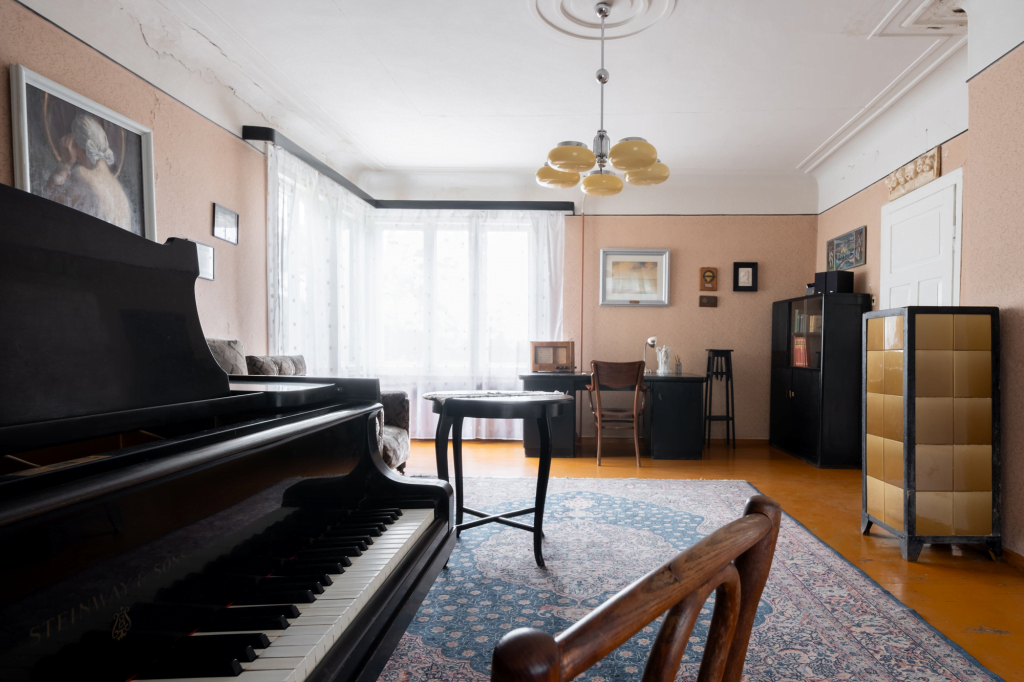KMM / Plan your visit to Juozas Gruodis House / Juozas Gruodis House / Permanent Exhibition at the Juozas Gruodis House
Permanent Exhibition at the Juozas Gruodis House
Built in 1932, the house is valuable both culturally and architecturally and in terms of landscape, capturing the hearts of every architecture lover. The Juozas Gruodis House hosts a permanent exhibition entitled My Work Alone is Noble.
Gruodis Family Home
The house in which the Gruodis family lived was built on a slope, with a large garden, a small vineyard and a vegetable garden planted on the rest of the slope. Since its construction, the wooden house has retained its authentic appearance, reminiscent of an ornate Lithuanian wooden manor house with a high curb roof. The main entrance is distinguished by five wooden columns supporting a balcony. The house is moderately decorated with elements typical of Lithuanian folklore, and the end of the roof ridge is adorned with ornaments that resonate well with the composer’s favourite ethnic music motifs. The building’s interior is no less authentic than the exterior.
Interior
The interior features wooden floors and stairs, profiled ceiling plaster, light fittings and electrical switches. The memorial rooms (the living room and the composer’s study) are furnished with authentic furniture; both memorial and exhibition rooms contain well-preserved stoves decorated with colourful tiles. In the living room, the visitors can see Gruodienė’s light wood chest of drawers with a mirror, an oak cupboard, and a table with chairs. One of the living room walls is decorated with a painting by S. Gruodienė. Gruodis’s room is full of items reminiscent of his life as a composer. The extensive collection includes the musician’s desk, a radio, a set of sofas and armchairs, and a rug. The walls are decorated with paintings by famous artists, gifts from his pupils and photographs from the Gruodis family’s personal archive.
My Work Alone is Noble
he permanent exhibition entitled My Work Alone is Noble was launched at the Juozas Gruodis House branch of the Kaunas City Museum on 19 December 2014, on the eve of the 130th anniversary of the birth of composer Juozas Gruodis. The exhibition was organised in two rooms of the musician’s home. Over 200 exhibits from the collections of the Mikas and Kipras Petrauskas House reflect the most important stages of Gruodis’s life and work.
The exhibition space on the ground floor contains a display of Gruodis’ family tree, compiled by Professor Algirdas Jonas Ambrazas (a renowned researcher of Juozas Gruodis life), as well as photographs, documents, sheet music and memorabilia from the period of the composer’s studies at the music conservatories in Moscow and Leipzig, and from his particularly important and productive Yalta period. An important part of this permanent exhibition are the exhibits dedicated to S. Petrauskaitė-Gruodienė, introducing us to Gruodienė’s versatile, creative and at the same time strong personality. These exhibits include two of her eleven diaries, an unpublished short story, unique folded figures made of candy paper, and photographs, etc. An equally important place is devoted to the history of the Juozas and Stasė Gruodis home and its evolution into a museum, featuring the design of the house created by the renowned architect Feliksas Vizbaras, a plan of the still-present garden drawn by J. Gruodis himself, various documents and photographs.

The exhibition features a collection of affirmation cards inscribed with the musician’s innermost desires and expectations. You can choose one of the sixteen cards written by J. Gruodis or one of a handful self-help cards created by the museum staff and adapted to [contemporary/today’s/present day] people. And if you can’t find one that suits you – create your own!

Upon entering Juozas Gruodis’s study, you can see the composer’s grand piano by Steinway & Sons (1929) that he himself used to play on. If you are a musician, please note that this study room is available for hire for chamber events and concerts.
The exhibition space on the first floor
reflects the composer’s professional activities at the State Theatre and the Kaunas School of Music, which later evolved into a music conservatory and Lithuania’s first higher music school. Gruodis was Lithuania’s first professor of composition, who not only established a national school for Lithuanian composers but was also one of the founders and leaders of the Lithuanian Composers’ Union, having contributed greatly to the Lithuanian Song Celebration movement and the raising of the level of musical culture across the country.
The exhibition also features a tree of pedagogical schools of Lithuanian composers, compiled by Professor Gražina Daunoravičienė, illustrating the activities of J. Gruodis as an educator and a pioneer of the music composition school in Lithuania. A corner dedicated to the composer’s work contains sheet music, photographs, and a categorised list of all his works.







